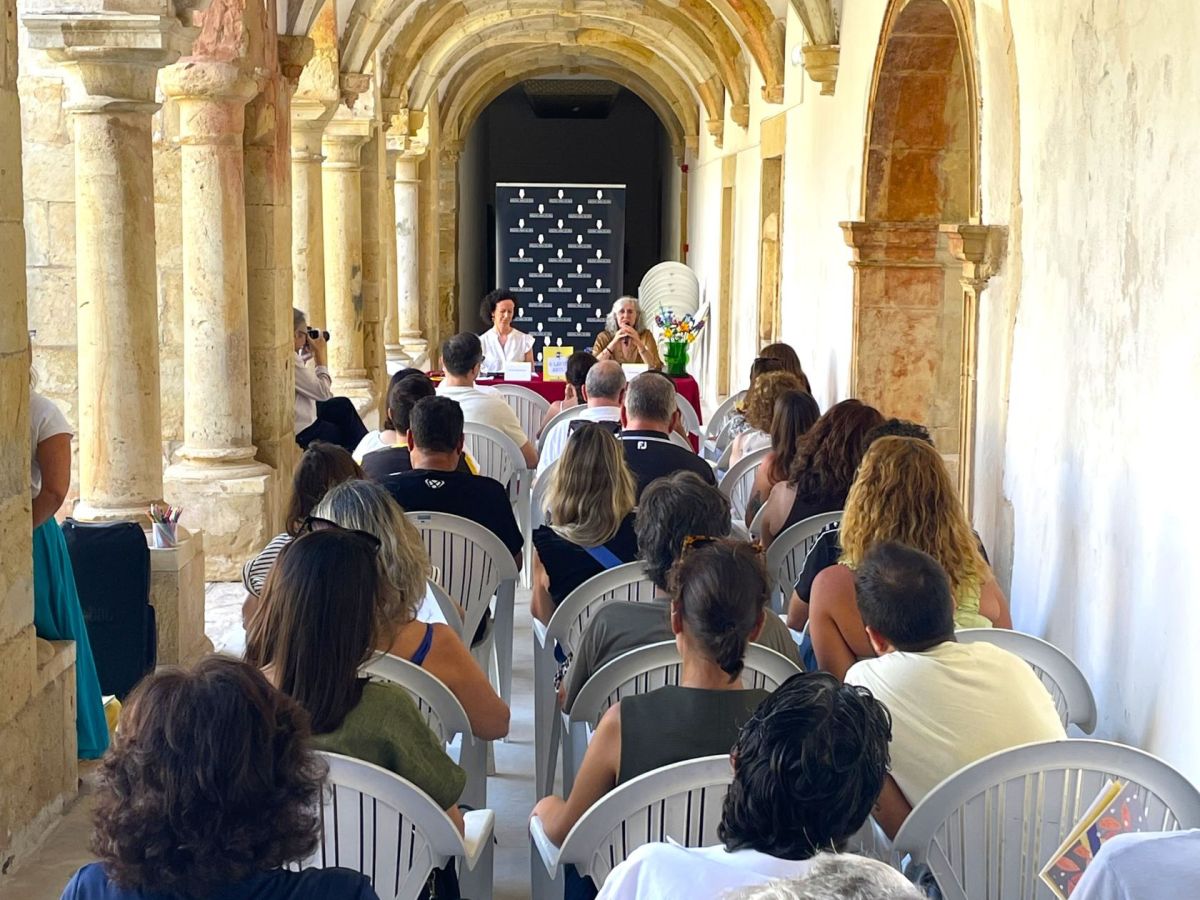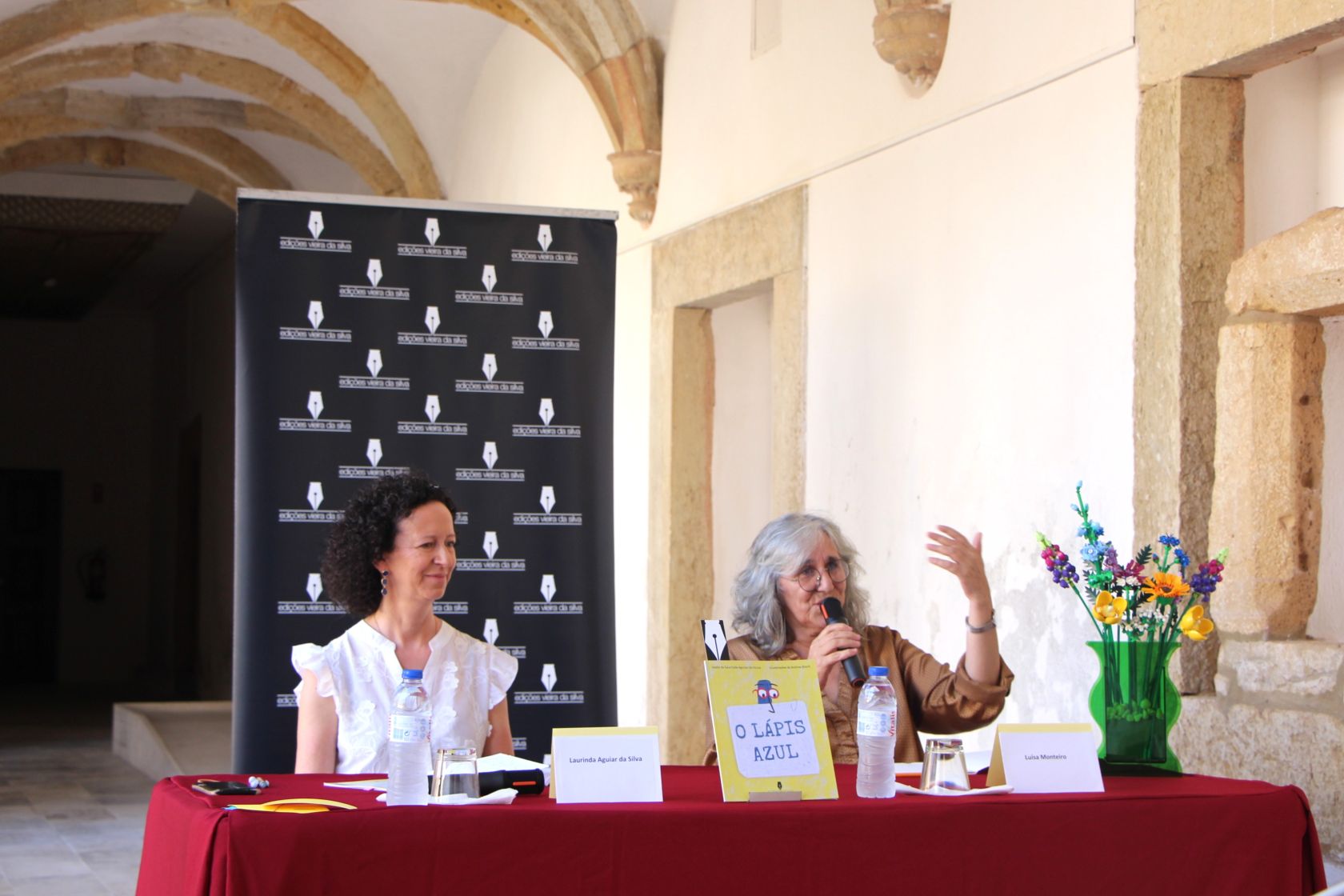The museum’s cloisters filled to welcome the book (published by Edições Vieira da Silva), which features illustrations by Andrea Ebert and a preface by Magda Costa Carvalho. It emerges as a tribute “to the creative power of questioning and thinking together” and was born from years of work in Philosophy with/for Children, according to the author.
The interplay between narrative and questioning shapes the story, and Luísa Monteiro made a point of sharing some of the questions that appear in the margins of the book: “Are there tasks meant not to be done?”; “What is work?”; “Why do we work?”; “What can words do?”; “What does it mean to be brave?”. “If Aristotle read this book”, she added, “he would say it’s a perfect or nearly perfect work – on the one hand, for containing all the elements of a tragic hero, and on the other, for having the essential components of a game”.
For Luísa Monteiro, the character Blue Pencil “fully embodies the journey of a tragic hero – born with the job of scratching, but whose overzealousness leads him to the horror of realising that pieces of the world have ceased to exist. Because of him. This recognition propels the discovery of his identity, producing catharsis, which occurs when the act of crossing out gives way to writing”.
She also referenced the historical figure of the blue pencil, created by the company Viarco, which served the purposes of censorship for 48 years. “It crossed out books, newspapers, poems, drawings – anything that went against the dictatorial regime”, she recalled. “The problem”, she raised, “is that today, fifty years later, we are once again full of fear. Once again, we are afraid of this ghost: that someone will erase our words, our thoughts, our opinions”.
Reflecting on the present day, Luísa Monteiro drew an analogy between modern censorship and the algorithm. “The Blue Pencil is, therefore, a very urgent, very timely book. Because once again we are talking about a new kind of slavery!”
















